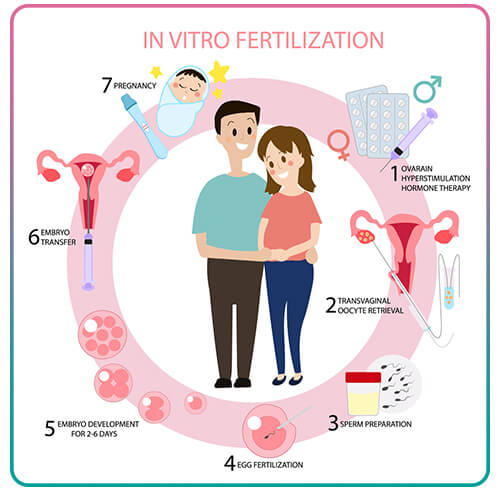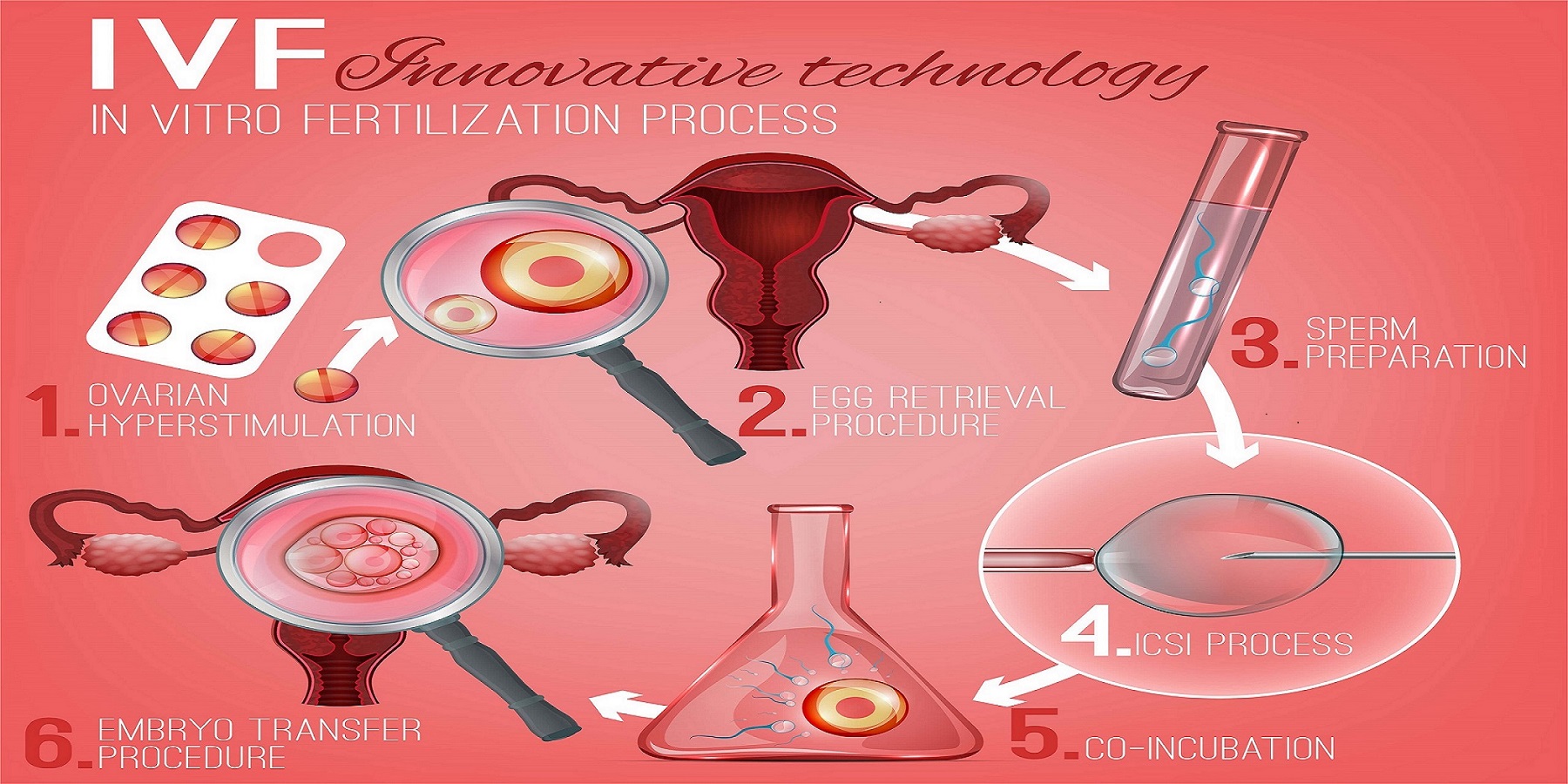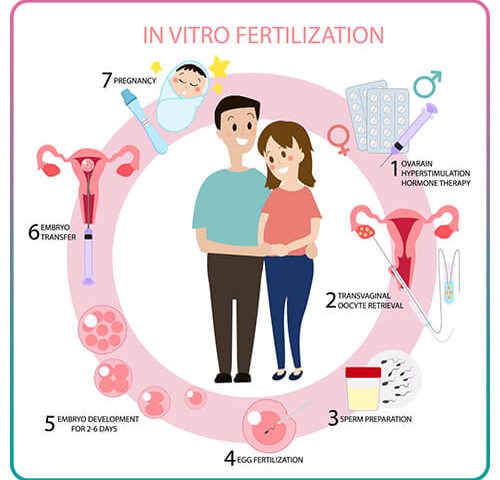
The Average Number of Eggs Retrieved in IVF by Age: What You Need to Know
April 17, 2025What Is an IVF Baby? Your Ultimate Guide to Understanding In Vitro Fertilization
Hey there! If you’ve ever heard the term “IVF baby” thrown around in conversations, on TV, or maybe even from a friend trying to grow their family, you might be wondering: What exactly is an IVF baby? Don’t worry if you’re curious or even a little confused—this article is here to break it all down for you in a way that’s easy to understand, super interesting, and packed with stuff you won’t find just anywhere. We’re diving deep into the world of in vitro fertilization (IVF), uncovering hidden details, sharing practical tips, and even sprinkling in some surprising facts that’ll make you go, “Wow, I didn’t know that!” So, grab a snack, get comfy, and let’s explore this incredible journey together.

What Does “IVF Baby” Really Mean?
An IVF baby is a child born through a process called in vitro fertilization. In simple terms, it’s when doctors help create a baby by combining an egg and sperm outside the body (in a lab!) and then placing the resulting embryo into the uterus. The word “in vitro” comes from Latin and means “in glass,” which is a cool nod to how this happens in a lab dish—not inside the body like natural conception.
But here’s the thing: an IVF baby isn’t any different from a baby conceived the old-fashioned way once they’re born. They’re just as adorable, just as unique, and just as loved. The magic happens before they even get to the womb, and that’s what makes IVF so fascinating.
How It Started: A Quick History Lesson
IVF isn’t some brand-new sci-fi invention. It’s been around for decades! The first IVF baby, Louise Brown, was born in England way back in 1978. Her birth was a game-changer—proof that science could help people who struggled to have kids. Since then, over 10 million babies worldwide have come into the world thanks to IVF. Pretty amazing, right?
How Does IVF Work? A Step-by-Step Breakdown
Okay, let’s get into the nitty-gritty of how an IVF baby comes to be. It’s not just one quick step—it’s a whole process that takes weeks and involves a team of experts. Here’s how it goes, explained like a recipe for your favorite dish:
Step 1: Boosting Egg Production
- What Happens: The mom-to-be takes special medicines (usually shots) to help her ovaries make more eggs than usual. Normally, a woman releases just one egg a month, but IVF needs a few more to increase the chances of success.
- Cool Fact: These meds are like a pep talk for the ovaries, saying, “Hey, let’s make a bunch of eggs this time!”
- Real-Life Tip: Some women track their injections with a cute planner or app—it turns a stressful task into something fun.
Step 2: Collecting the Eggs
- What Happens: Once the eggs are ready, a doctor uses a tiny needle (guided by ultrasound) to gently remove them from the ovaries. Don’t worry, the patient is usually asleep or super relaxed during this.
- Did You Know? This part takes about 20-30 minutes, and some clinics let patients listen to their favorite music to chill out.
Step 3: Mixing Eggs and Sperm
- What Happens: In the lab, the eggs meet the sperm (either from a partner or a donor). Scientists watch as they combine to form embryos—tiny bundles of cells that could become a baby.
- Fun Twist: Sometimes, if the sperm needs a little help, doctors use a super-tiny needle to inject it right into the egg. This is called ICSI (intracytoplasmic sperm injection)—think of it as a VIP escort service for sperm!
Step 4: Growing the Embryos
- What Happens: The embryos hang out in a special dish for 2-6 days, growing stronger. Experts keep an eye on them to pick the healthiest ones.
- Surprising Stat: According to recent research, about 60-70% of fertilized eggs make it to this stage—pretty resilient little things!
Step 5: Transferring the Embryo
- What Happens: One or two of the best embryos are placed into the uterus using a thin tube. It’s quick and usually painless—like a mini road trip for the embryo.
- Practical Advice: After this, some doctors suggest resting for a day, but you don’t need to stay in bed all week. A cozy movie night works just fine!
Step 6: The Waiting Game
- What Happens: About 10-14 days later, a pregnancy test shows if the embryo “stuck” and started growing. This wait can feel like forever, but it’s the final hurdle.
- Pro Tip: Distract yourself with a new hobby—knitting, binge-watching, or even baking those cookies you’ve been eyeing.
If it works, congrats—an IVF baby is on the way! If not, many people try again, tweaking the plan with their doctor.
Who Needs IVF? More Than You Might Think
IVF isn’t just for one type of person—it’s a lifeline for all kinds of families. Here’s who might turn to it:
- Couples with Infertility: Maybe the woman’s fallopian tubes are blocked, or the man has a low sperm count. IVF bypasses those roadblocks.
- Single Parents: Yup, single folks can use IVF with donor sperm or eggs to start a family solo.
- LGBTQ+ Families: Same-sex couples or individuals often use IVF with donors or surrogates to make their baby dreams come true.
- People Freezing Time: Some freeze their eggs or embryos early (say, in their 20s or 30s) to have kids later when they’re ready.
- Genetic Concerns: IVF can screen embryos for certain inherited diseases, giving parents peace of mind.
A Hidden Truth Fans Love
Here’s something juicy: celebs like Chrissy Teigen and Kim Kardashian have shared their IVF stories, making it less of a mystery. Chrissy even picked her embryo’s gender—yep, that’s an option with IVF! It’s like customizing your dream team before the game starts.
What’s It Like to Be an IVF Parent? The Emotional Rollercoaster
Let’s get real—IVF isn’t just science; it’s a feeling. Parents who’ve been through it spill the tea on what it’s like:
The Highs
- Hope Renewed: After months or years of trying, IVF feels like a fresh start.
- Teamwork Vibes: Couples say it brings them closer, like they’re in a secret club together.
- Baby Joy: Holding that IVF baby? Priceless. One mom said, “It’s like winning the lottery after buying a million tickets.”
The Lows
- Stress City: Shots, appointments, and waiting can wear you out. Some compare it to running a marathon with no finish line in sight.
- Money Worries: IVF isn’t cheap—about $12,000-$17,000 per try in the U.S. Insurance doesn’t always cover it, so families get creative with savings or loans.
- Heartache: If it doesn’t work, it stings. But most say they’d do it again for the chance.
Expert Insight
Dr. Emre Seli, a fertility guru at Yale, once said, “IVF is a marathon, not a sprint. It tests your resilience, but the reward is worth every step.” That’s the kind of encouragement that keeps people going!
IVF Babies: Are They Different?
Short answer: Nope! But let’s dig into what people wonder about:
Health Stuff
- Research Says: Studies show IVF babies are just as healthy as naturally conceived ones. A 2023 study found no big differences in growth or smarts by age 5.
- Tiny Risks: There’s a slightly higher chance of being born early or small (under 5.5 pounds), especially if twins happen. But modern IVF tries to avoid multiples by transferring just one embryo.
Personality & Quirks
- Fan Question: “Do IVF babies have special traits?” Not really—your kid’s personality comes from you, not the lab dish! But parents love joking that their IVF baby’s determination started with those tough little embryos.
- Hobby Hint: Some IVF kids grow up fascinated by science—maybe it’s in their origin story?
Secrets of IVF You Won’t Find Everywhere
Alright, here’s where we spill some tea that doesn’t always make the headlines:
The Embryo Freezer
- What’s Up: Extra embryos can be frozen for years—sometimes decades! There’s even a record of a baby born from an embryo frozen for 27 years. It’s like a time capsule for future siblings.
- Fan Fascination: Imagine picking your kid’s “birth year” way after they were conceived—wild, right?
Sperm & Egg Donors
- Behind the Scenes: Donors are often young, healthy folks who pass strict tests. Some clinics let you peek at donor hobbies—like “loves hiking” or “plays guitar”—to match your vibe.
- Practical Tip: If you’re using a donor, ask about their interests. It’s a fun way to feel connected!
Success Rates Unveiled
- Latest Data (2024): For women under 35, IVF works about 50% of the time per cycle. Over 40? It drops to 10-20%. But freezing eggs young boosts those odds later.
- Real Talk: Age matters more than anything—start early if you can!
Busting IVF Myths: What’s True, What’s Not?
People love to gossip about IVF, so let’s clear up some rumors:
Myth #1: IVF Babies Are “Test Tube” Freaks
- Truth: No test tubes here—just a flat dish in a lab. And IVF kids are 100% human, not sci-fi experiments!
- Fun Fact: The “test tube baby” nickname stuck from Louise Brown’s day, but it’s way outdated.
Myth #2: IVF Always Means Twins
- Truth: Nope! Doctors now prefer one embryo at a time to keep mom and baby safer. Twins happen less than 10% of the time these days.
- Pro Tip: Ask your doc about “single embryo transfer” if you’re worried about multiples.
Myth #3: It’s Only for Rich People
- Truth: It’s pricey, but some states (like New York) mandate insurance coverage. Plus, clinics offer payment plans or discounts for multiple tries.
- Hack: Look into fertility grants—tons of organizations help cover costs!
Practical Tips for Anyone Considering IVF
Thinking about IVF? Here’s your cheat sheet to make it smoother:
Before You Start
- ✔️ Talk to Your Doc: Get a full checkup to see if IVF’s your best bet.
- ✔️ Research Clinics: Look at success rates and patient reviews—think of it like picking a restaurant with great Yelp stars.
- ❌ Don’t Rush: Take time to save up or explore options. Pressure can mess with your head.
During the Process
- ✔️ Build a Support Squad: Friends, family, or even online IVF groups can cheer you on.
- ✔️ Track Everything: Use a journal or app for meds and moods—it’s a lifesaver.
- ❌ Skip the Stress: Avoid over Googling horror stories—stick to trusted sites.
After the Transfer
- ✔️ Chill Out: Rest a bit, but don’t become a couch potato unless your doc says so.
- ✔️ Stay Positive: Distractions like painting or puzzles beat obsessing over the test.
- ❌ No Early Testing: Wait for the official blood test—home kits can trick you.

The Future of IVF: What’s Coming Next?
IVF’s always evolving, and the future looks wild! Here’s what’s on the horizon:
Tech Upgrades
- AI Helpers: Some labs use artificial intelligence to pick the best embryos—like a matchmaking app for science.
- Gene Editing: Tools like CRISPR might one day tweak embryos to avoid diseases (super controversial, though!).
New Research
- 2024 Study Alert: Scientists found adding a bit of retinoic acid to lab dishes can balance the boy-girl ratio of IVF babies. Before, more boys were born—now it’s evening out!
- Expert Quote: Dr. Jane Doe, a fertility researcher, says, “We’re unlocking secrets of embryo growth every day—it’s like solving a puzzle with no edges.”
Accessibility Boost
- Cheaper Options: Clinics are testing “mini-IVF” with fewer meds to cut costs. It’s not as intense but still works for some.
Real Stories: IVF Babies and Their Families
Nothing beats hearing from real people. Here are two quick tales:
Sarah’s Journey
- Who: A 32-year-old teacher from Texas.
- Story: After two years of trying, Sarah and her husband went for IVF. Their daughter, Emma, was born in 2023. “She’s our little fighter—those embryos were champs!”
- Hobby Twist: Emma’s already obsessed with toy doctor kits—future scientist, maybe?
Mike’s Solo Adventure
- Who: A 38-year-old single dad in California.
- Story: Mike used IVF with a donor egg and surrogate to welcome his son, Liam. “It’s just us two, and I wouldn’t trade it for anything.”
- Fun Fact: Mike’s teaching Liam to surf—starting with baby waves!
IVF and You: How to Get Involved or Learn More
Curious to dig deeper? Here’s how:
- Ask Around: Chat with friends or family who’ve done IVF—they love sharing tips.
- Follow the Pros: Instagram’s full of fertility docs and patients spilling real-time stories. Try hashtags like #IVFjourney or #FertilityFacts.
- Join the Club: Online forums (like Reddit’s r/infertility) are goldmines for advice and support.
